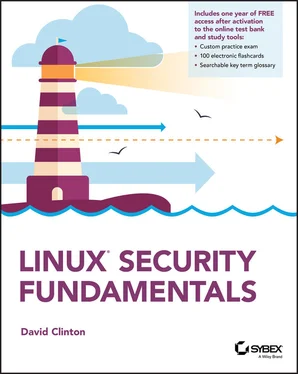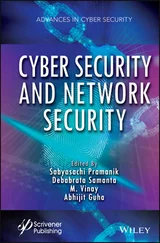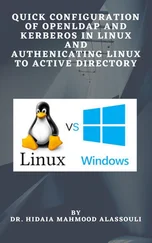18 Index
19 End User License Agreement
1 Chapter 3 Figure 3.1 The stages involved in booting a (Linux) computer using UEFIFigure 3.2 A typical account entry within a password managerFigure 3.3 The results of an email search of the HIBP databaseFigure 3.4 The results of a search of the HIBP database for a password stringFigure 3.5 Permission levels assigned to users and a user groupFigure 3.6 A simplified illustration of the contents of a TCP data packet including metadat...Figure 3.7 A typical network setup where a firewall device stands between the internet and ...Figure 3.8 An AWS EC2 security group permitting SSH and browser (HTTP) traffic into the res...
2 Chapter 4 Figure 4.1 A typical example of IP address allocations within a private subnetFigure 4.2 A NAT server translating IP addresses and managing traffic between local and pub...Figure 4.3 The Wireshark “home” screen showing links to all the networks available to the s...Figure 4.4 The results of a typical network scan shown in Wireshark
3 Chapter 5 Figure 5.1 A typical symmetric encryption and decryption processFigure 5.2 The recipient’s public key is used to encrypt and later decrypt a file with the ...Figure 5.3 The sender’s public key is used to encrypt and later decrypt a file with the use...Figure 5.4 The step-by-step representation of a blockchain transaction
4 Chapter 6 Figure 6.1 The successful SSL Report on the TLS configuration for the bootstrap-it.comwebs...Figure 6.2 The conversation between a client browser and a TLS-powered web serverFigure 6.3 Installation instructions on the Certbot websiteFigure 6.4 A typical VPN running through a secure tunnel connection
5 Chapter 7 Figure 7.1 The NVD DashboardFigure 7.2 A layered diagram of NVD-related tools
6 Chapter 8 Figure 8.1 Some output from the dmesgcommand on a Linux Ubuntu 18.04 system. Exciting read...
7 Chapter 9 Figure 9.1 Public-facing web servers are allowed fairly open access from public networks, w...Figure 9.2 A common dual-firewall DMZ setupFigure 9.3 A bastion host is a server placed within a DMZ through which remote admins can a...Figure 9.4 The VirtualBox network adapter configuration dialog box
1 Cover
2 Table of Contents
3 Introduction
1 i
2 ii
3 iii
4 v
5 xiii
6 xiv
7 xv
8 1
9 2
10 3
11 4
12 5
13 6
14 7
15 8
16 9
17 10
18 11
19 12
20 13
21 15
22 16
23 17
24 18
25 19
26 20
27 21
28 22
29 23
30 24
31 25
32 26
33 27
34 28
35 29
36 30
37 31
38 33
39 34
40 35
41 36
42 37
43 38
44 39
45 40
46 41
47 42
48 43
49 44
50 45
51 46
52 47
53 48
54 49
55 50
56 51
57 52
58 53
59 54
60 55
61 56
62 57
63 59
64 60
65 61
66 62
67 63
68 64
69 65
70 66
71 67
72 68
73 69
74 70
75 71
76 72
77 73
78 74
79 75
80 76
81 77
82 78
83 79
84 81
85 82
86 83
87 84
88 85
89 86
90 87
91 88
92 89
93 90
94 91
95 93
96 94
97 95
98 96
99 97
100 98
101 99
102 100
103 101
104 102
105 103
106 104
107 105
108 106
109 107
110 108
111 109
112 110
113 111
114 112
115 113
116 114
117 115
118 116
119 117
120 118
121 119
122 120
123 121
124 122
125 123
126 125
127 126
128 127
129 128
130 129
131 130
132 131
133 132
134 133
135 134
136 135
137 136
138 137
139 138
140 139
141 140
142 141
143 143
144 144
145 145
146 146
147 147
148 148
149 149
150 150
151 151
152 152
153 153
154 154
155 155
156 156
157 157
158 158
159 159
160 160
161 161
162 162
163 163
164 164
165 165
166 166
167 167
168 168
169 169
170 170
171 171
172 172
173 173
174 174
175 175
176 176
177 177
Right off the top, I’d like to be clear about exactly what this book is and what it’s not. Linux Security Fundamentals is a guide to security best-practices for Linux admins. It is not however a comprehensive guide to deploying secure workloads in Linux environments.
So don’t expect a lot of nuts and bolts demonstrations of complex administration tasks. We’re not even going to cover the core basics of the Linux command line. I’ll assume you’ve got all that already. This isn’t a very technical book. In fact, there may be one or two chapters that don’t even specifically mention Linux.
We won’t talk, say, about the detailed configuration settings controlling cgroups or setting up effective and bullet-proof Nagios servers–as important as they are. For that kind of detail, you can consult Chris Negus’ Linux Bible–or the Ubuntu Bible that I wrote in collaboration with Chris.
Instead, this book will quickly deliver the big-picture security knowledge that every admin should know (but often doesn’t). The trick here, is that all that knowledge will delivered within a Linux context. So, for instance, along with the big-picture stuff you can expect to learn how to install the OpenVAS vulnerability scanner, construct a firewall using iptables, or build a custom Wireguard VPN. But don’t expect to find that kind of technical detail in every chapter.
Why is a book like this necessary?
The moment we connect our phones, laptops, and servers to the internet, we’re all living in a very dangerous neighborhood. And there’s no single ‘set-it-and-forget-it’ solution that’ll reliably keep all the looming threats away. The only way you can even hope to protect yourself and your digital resources is to understand the kinds of vulnerabilities that could affect your infrastructure and the ways smart administration can maximize both harm prevention and mitigation. But there’s more. Since the IT threat landscape changes so often, you’ll also need to learn how to continuously monitor your infrastructure and keep up with developments in the technology world.
Whether you’re a professional Linux admin, a developer, a data engineer, or even just a regular technology consumer, you’ll be both safer and more effective at everything you do if you can understand and apply security best practices. And considering how Linux has come to dominate the web application, DevOps, internet of things, and mobile connectivity industries, getting security right on Linux is more critical than ever before.
Each of the book’s chapters includes review questions to thoroughly test your understanding of the services you’ve seen. The questions were designed to help you better understand and remember the content. Although the difficulty level will vary between questions, it’s all on target for the real digital world. Once you complete a chapter’s assessment, refer to Appendix for the correct answers and detailed explanations.
What Does This Book Cover?
This book covers topics you need to know to prepare for the Security Essentials certification exam.
Chapter 1: Using Digital Resources ResponsiblyIn this chapter, you’ll learn about protecting the digital rights and privacy of people with whom you interact, including your own employees and the users of your services.
Читать дальше












